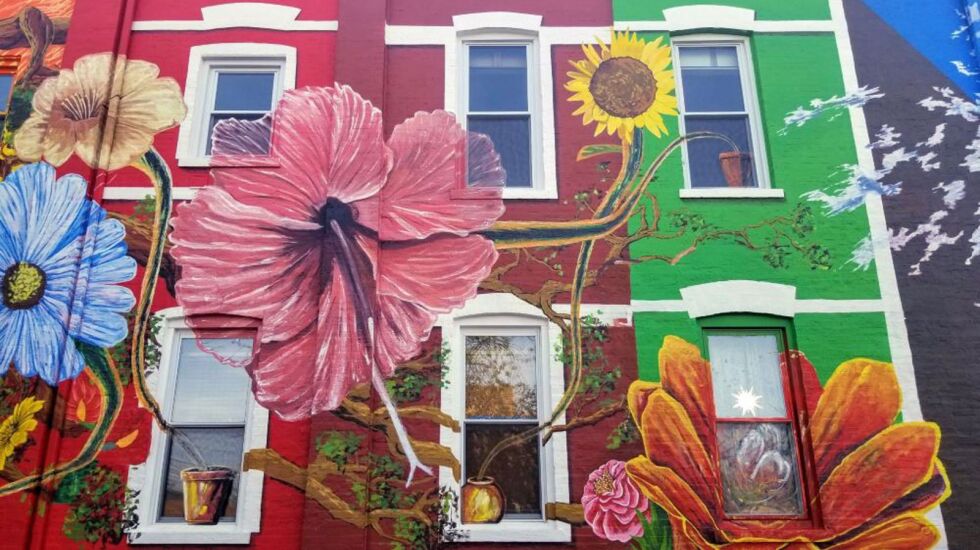
They say their new mural — standing nearly three stories high, painted on a building at 1910 S. Wolcott Ave. that’s owned by the Pilsen Housing Cooperative, for which the two artists are co-founders — aims to unite Pilsen residents to push back against the economic forces that have helped push some Mexican American families out of the neighborhood.
“We put this name from the beginning: ‘Fight to Stay,’ ” Duarte says. “The name of this mural is [about] anti-gentrification but mostly the big impact from investors. They buy the small, old houses, and they destroy the character of Pilsen.”
The mural reflects the purpose of the Pilsen Housing Cooperative, Duarte says.
“The mission of this co-op is to stay in Pilsen,” he says. “Don’t go. You are from here. You can survive here. We think it may represent the spirit of the people who live in Pilsen. They’d like to stay, but the money is not sufficient to pay the rent. The new owners have the rents three or five times higher.”

Pilsen has a long history as a Mexican American enclave. In recent years, though, some family homes and panaderias and taquerias have given way to luxury apartment buildings and high-end restaurants. Property values and rents have risen. Between 2011 and 2020, the 60608 ZIP code that includes Pilsen and parts of Bridgeport and McKinley Park has lost 10,392 Latino residents, according to census figures.

The new mural also offers a callback to Mario Castillo’s “Peace,” which was the first mural in Pilsen and later also recognized as the first in the nationwide Chicano movement. It portrayed anti-war sentiments and included elements of Native American culture.
“Peace” was on Halsted Street between Cullerton Avenue and 19th Street but was sandblasted away in 1992.
Offering a nod to “Peace” was natural, Villa says, because “his mural has a lot of history, being one of the earliest murals by a Latino artist in Chicago. And especially that time frame, the late ‘60s, it was very much in the style of the counterculture.”

Duarte and Villa scaled down Castillo’s work and made it one part of their new mural.
Castillo calls that “an honor.”
“It’s part of history, and it’s allowing me to have a footnote in history,” he says.

The mural includes images of two tornadoes.
One is shown sweeping away elements of traditional Mexican culture. The “invader” tornado is behind the “Peace” mural, threatening it and other elements of Mexican culture. Duarte says it represents the threat of displacement from investors buying into the neighborhood.
Countering that is a “family” tornado that grows from a flower and portrays five people holding hands, swirling against the first tornado.
“The family tornado represents our neighbors, the co-op,” Duarte says. “It represents all the intention to stay in Pilsen: Don’t go from Pilsen.”
The mural is also filled with flowers growing from small flower pots on painted windowsills.
“Every single window represents some family or people here” in the co-op building, Duarte says. “The culture is coming from where the people live. Put that energy in that plant. It’s growing. To say: ‘I live here. I own it.’ ”
Another key element of the mural: a tree rooted in obsidian, a volcanic rock the artists say represents indigenous cultures, symbolizing the deep roots of culture and community for Mexican Americans living in Pilsen.
“The tree represents community,” Villa says. “It represents the longtime Pilsen residents that are there, staying there, standing here firmly rooted in the ground.”








